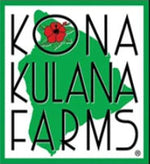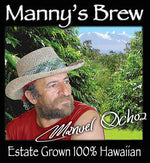With the continuous popularity of coffee worldwide, Kona Coffee has retained its position as one of the world’s premium coffees. Thriving on a strip of land located along the west side of the Big Island known as the Kona Coffee Belt, it has been cultivated by small-scale family farms in the area.
Due to the area’s ideal environment, quality Kona beans are produced that create a heady, aromatic cup of coffee in demand in the market. Their unique flavor profile has garnered Kona coffee several awards, including being one of the Top 10 coffees in the world by the Specialty Coffee Association of America
Though the coffee industry has steadily been modernized for efficient and effective production, coffee beans cultivated by small-scale family-owned farms are still highly valued. Not only do they provide quality coffee beans thoroughly prepared with tender love and care, but they also retain the culture and history of the land and crops they strive to cultivate.
Kona coffee production is labor intensive and sensitive, with each process from planting to roasting done meticulously and with care. Because of its small scale, a lot of resources must be invested and wagered. Oftentimes harvests have been affected due to disease and natural calamities, as well as climate change caused by global warming.
But at the end of it all, you’re ensured one of the finest brewed coffees to sip and enjoy to its fullest.
The Family-Owned Farm
The first coffee seeds in Hawaii were planted in 1817, however it did not become established as an agricultural crop until 1836, wherein the first large-scale coffee operation was started.
The center of coffee production back then was at Kaua’i, but as commercial ventures began to spread to other areas of the Big Island they discovered that coffee thrived on the slopes of Mauna Loa and Hualālai in Kona.
Eventually, Kona coffee farms settled in the area now known as the Kona Coffee Belt, and is still producing coffee beans to this day.

Note: you can learn more about the history of our Kona farms by signing up for a tour the next time you’re in Hawaii!
Though production is a primary priority of farmers, it is essential to exercise sustainability and ethical practices. This not only preserves the overall environmental, social, and economic concerns of the agricultural area, but also preserves its integrity to ensure its continuous usage by future generations.
Before talking about coffee and the likes, one must first start from its origin. Cultivation of Kona coffee begins as a young, green coffee seed. The specific variety of the Kona coffee is Kona Typica, which is part of the Coffea Arabica family and is popularly known due to its low-acidity and smooth and floral body.
However, its root stock is known to be vulnerable to disease, thus making it unstable and hinders the growth of the tree. In order to address this dilemma, Kona farmers started grafting a Kona Typica seedling to the root stock of a sturdier coffee variety, with liberica varieties being a popular choice.
The grafting process is done by first cutting the Kona Typica seedling by the stem area close to the soil and attaching it to a stem of the stronger root stock. This attachment process is done using a clip or a tie that serves to bind the two together. Over time, the stems will merge and grow into a sturdy tree that will eventually yield Kona Typica coffee beans.
The Harvesting Process
Once the seedling has adjusted with the grafting process, it takes around 3-4 years for a Kona coffee seedling to produce a significant coffee yield. During that period of growth, the optimal environment for them to thrive are sunny mornings and cloudy, humid afternoons.

It’s ideal for them to not be under direct sunlight in the afternoons and in areas with mild nights free from freezing. As the Kona coffee seedlings begin to grow, telltale signs of fruit growth are indicated with the emergence of strong, fragrant coffee blossoms locally called “Kona Snow”. The blossoms will gradually turn into green coffee cherries that will take months to ripen.
The ripening window of Kona coffee cherries is often during fall to early winter, although this time frame may vary depending on the elevation where the seedlings were planted. Due to the slope of the Hualālai volcano being steep, there are varying temperatures depending on the elevation of the farms.
Hence, harvesting of the cherries has always been a problem, since they do not ripen all at once. Coffee pickers carefully select and hand-pick the bright red cherries to be harvested and leave the unripe ones to mature.













